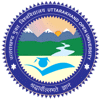|
Ch 1: Technology Framework in e-Learning
- 1.1: Introduction
- 1.2: Technology Analysis
- 1.3: Appropriate Technology
|
|
Ch 2: Learners Profile Analyze
- 2.1: Resources Availability At Learner's End
- 2.2: Selection of Technology To Match Resources
- 2.3: Meeting Objectives
|
|
Ch 3: Available Tools & Technologies for Delivering e-Content
- 3.1: Approaches for delivering e-Content.
- 3.2: Multimedia Learning Resources.
- 3.3: Technologies in Textual Deliveries.
- 3.4: Audio Technologies & Tools
- A) Audio File Formats
- B) Compression Techniques
- C) Audacity Audio Tool
- 3.5: Video Technologies & Tools
- A) File Formats
- B) Compression techniques
- C) Techniques by Easynow
|
|
Ch 4: Structuring & Presenting e-Content
- 4.1: Structuring content based on pedagogical concepts
- 4.2: Presenting content in different output formats
- 4.3: Authoring tools to create and manage content
- 4.4: Comparing eLML to other markup languages
- 4.5: Usability and marketing studies
|
|
Back To Course 5
|
|
Chapter 3.1 - Approaches for delivering e-Content
1. Asynchronous Mode
Asynchronous or self study learning, consist that content is available online and the student can access anytime. Where communication, collaboration and learning can occur in different time and different place, and users can select when they wish to communicate. Based on the developed techniques of networking, asynchronous learning is split up into on-line and off-line status.
A: Off-line Learning
Computer-Aided Instruction (CAI) is a typical method of off-line learning. In general, the content of CAI — text, graphs, pictures, audio and video are stored in a CD-ROM. Recent product a Digital Versatile Disc called DVD is capable to store 4.7GB/8.5GB (single layer DVD-5 or dual layer DVD-9) in comparison to a traditional CD which can store only 700MB of data.
There is new technology in the digital disc is Blu-Ray Disc (BD) which again comes in two modes i.e. Single Layer and Double layer having a capacity of 25GB and 50GB respectively. But as per the cost ratio & availability and availability of Blu-Ray player with learners, we recommend not to use this media unless it becomes widely accepted format among learners.
Therefore, these two kinds of disks are basic storage for off-line learning – CD & DVD. In general, interactive response on off-line state is faster than on-line state. Once the contents have been stored, editing is not allowable. Hence, it is suitable to construct the core courses that are well developed fundamental curriculum.
B: On-line Learning
The content of on-line learning is built by the hypermedia technique, which is stored in the network computer server. Students can study or review the contents from the web site at anytime. There are two types of data sources, the static type based on text, graphs and pictures combined as the auxiliary parts of the resources to provide the leaner a complete concept. The second is dynamic involve motion pictures, associated texts, matched sounds, recorded video lectures etc. The static resources require less bandwidth than the dynamic content; however, it lacks sense of reality that enables the learners get a whole picture of the subject. On the other hand, the latter type enables the learners’ to feel the sense of reality. Students would pay more attention on the subjects due to the colorful and diversified environment; hence the outcome is better than the former one. But, huge amount of data and slow transmission speed of the net are its weaknesses. Contents are allowed to renew at anytime, therefore, it always remains up-to-date.
Next
|
|
